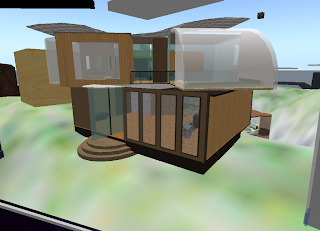
Sunday, June 20, 2010
Friday, June 11, 2010
Media research: National Fire Protection Association Membership
http://www.nfpa.org/index.asp
The mission of the international nonprofit NFPA, established in 1896, is to reduce the worldwide burden of fire and other hazards on the quality of life by providing and advocating consensus codes and standards, research, training, and education.
The world's leading advocate of fire prevention and an authoritative source on public safety, NFPA develops, publishes, and disseminates more than 300 consensus codes and standards intended to minimize the possibility and effects of fire and other risks.
Membership
NFPA members get the technical support and professional connections they need to make the right choices in their on-the-job decisions. Members also get a larger view of the issues affecting their industries – and what they can do to prepare for possible outcomes.
History
The NFPA was formed in 1896 by a group of insurance firm representatives with the stated purpose of standardizing the new and burgeoning market of fire sprinkler systems. The scope of the NFPA's influence grew from sprinklers to include building electrical systems (another new and fast-growing technology), and then all aspects of building design and construction.
Its original membership consisted of, and was limited to, insurance underwriting firms. There was little representation from the industries the NFPA sought to regulate. This changed in 1904 to allow other industries and individuals to participate actively in the development of the standards promulgated by the NFPA. The first fire department to be represented in the NFPA was the New York City Fire Department in 1905. Today, the NFPA includes representatives from many fire departments, insurance companies, manufacturing associations, unions, trade organizations, even average people.
The NFPA today
Headquartered in Quincy, Massachusetts, U.S.A., the NFPA oversees the development and maintenance of over 300 codes and standards. A cadre of over 6000 volunteers representing the fire service, insurance, business, industry, government, and consumers develops these documents. Many state, local, and national governments incorporate the standards and codes developed by the Association into their own law either verbatim, or with only minor modifications. Even when not written into law, the Association's standards and codes are typically accepted as a professional standard, and are recognized by many courts as such. This widespread acceptance is a testament to the broad representation and input received on all the NFPA's projects.
There is a growing controversy regarding the presence of manufacturers on NFPA's committees. Some first responders see the profit motivation of corporate employees as a conflict of interest.
Sparky the Fire Dog
NFPA's official mascot since 1951, Sparky hosts his own Web site to teach children about fire safety and other important safety topics. Sparky has starred in his own series of TV public service announcements. There have been a total of nine sparky's.
http://en.wikipedia.org/wiki/National_Fire_Protection_Association
The mission of the international nonprofit NFPA, established in 1896, is to reduce the worldwide burden of fire and other hazards on the quality of life by providing and advocating consensus codes and standards, research, training, and education.
The world's leading advocate of fire prevention and an authoritative source on public safety, NFPA develops, publishes, and disseminates more than 300 consensus codes and standards intended to minimize the possibility and effects of fire and other risks.
Membership
NFPA members get the technical support and professional connections they need to make the right choices in their on-the-job decisions. Members also get a larger view of the issues affecting their industries – and what they can do to prepare for possible outcomes.
History
The NFPA was formed in 1896 by a group of insurance firm representatives with the stated purpose of standardizing the new and burgeoning market of fire sprinkler systems. The scope of the NFPA's influence grew from sprinklers to include building electrical systems (another new and fast-growing technology), and then all aspects of building design and construction.
Its original membership consisted of, and was limited to, insurance underwriting firms. There was little representation from the industries the NFPA sought to regulate. This changed in 1904 to allow other industries and individuals to participate actively in the development of the standards promulgated by the NFPA. The first fire department to be represented in the NFPA was the New York City Fire Department in 1905. Today, the NFPA includes representatives from many fire departments, insurance companies, manufacturing associations, unions, trade organizations, even average people.
The NFPA today
Headquartered in Quincy, Massachusetts, U.S.A., the NFPA oversees the development and maintenance of over 300 codes and standards. A cadre of over 6000 volunteers representing the fire service, insurance, business, industry, government, and consumers develops these documents. Many state, local, and national governments incorporate the standards and codes developed by the Association into their own law either verbatim, or with only minor modifications. Even when not written into law, the Association's standards and codes are typically accepted as a professional standard, and are recognized by many courts as such. This widespread acceptance is a testament to the broad representation and input received on all the NFPA's projects.
There is a growing controversy regarding the presence of manufacturers on NFPA's committees. Some first responders see the profit motivation of corporate employees as a conflict of interest.
Sparky the Fire Dog
NFPA's official mascot since 1951, Sparky hosts his own Web site to teach children about fire safety and other important safety topics. Sparky has starred in his own series of TV public service announcements. There have been a total of nine sparky's.
http://en.wikipedia.org/wiki/National_Fire_Protection_Association
Subscribe to:
Comments (Atom)













































